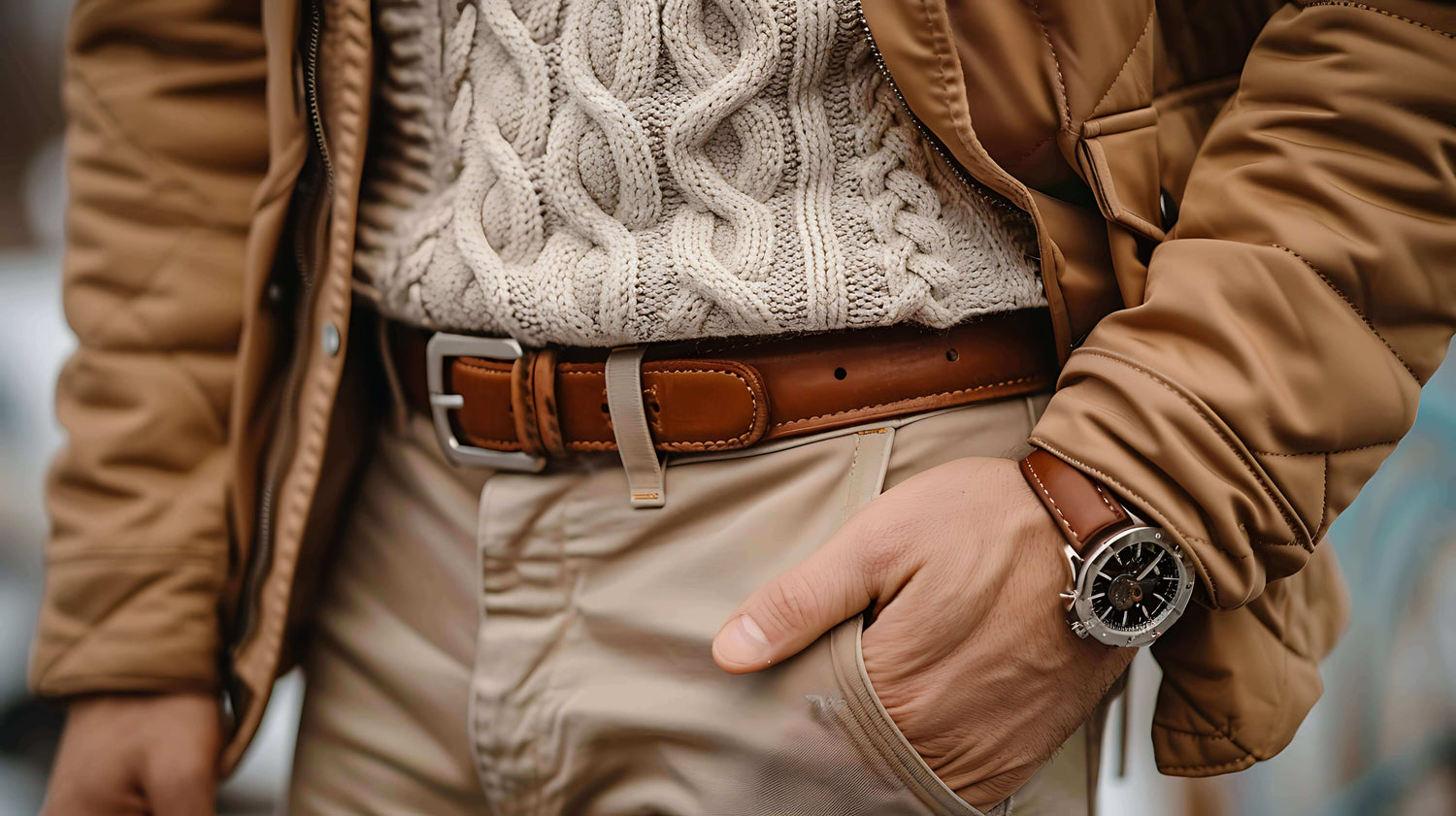A tactical belt is made to carry heavy gear with comfort and support. But if your belt sags, it loses its purpose. Many people wonder why tactical belts sag, even when they appear sturdy. The issue often lies in poor core support and low belt stiffness.
Tired of your belt slipping or shifting while on duty? A sagging belt can ruin your performance. But don’t worry, there’s a fix! Discover how to achieve the ideal tactical belt support and bid farewell to discomfort.
The key to solving tactical belt sagging is choosing the right materials and setup. With smart tips and the right gear, like load-bearing tactical belts, you can improve your comfort and movement. This guide covers tactical belt stiffness, load balance, and real fixes that work.
Why Tactical Belts Sag in the First Place
A tactical belt sags when it lacks core support or proper belt stiffness. Poor gear setup and weak material often lead to this common issue.
1. Lack Of Core Support
A belt without tactical belt core support can't handle heavy gear. It bends, shifts, and causes discomfort. This is a main reason why tactical belts sag during use. Strong core support keeps your belt firm and gear steady.
2. Low Stiffness Rating
A low belt stiffness rating means your belt is too soft to hold gear. It bends easily and starts to sag. This leads to poor support and shifting gears. Always choose a belt with high tactical belt stiffness for better hold.
3. Poor Load Distribution
Poor load distribution puts uneven pressure on your tactical belt. One side sags while the other feels tight. It affects comfort and balance badly. Smart tactical load distribution keeps your gear steady and your belt in place.
4. Incorrect Wearing Technique
Wearing your tactical belt too loosely causes slipping and sagging. Many ignore how to wear tactical belt correctly. The wrong setup affects grip and support. A proper fit boosts comfort and keeps your gear secure.
How to Stop Tactical Belt from Sagging: Proven Fixes

Struggling with a sagging tactical gear belt? Here are smart and simple ways to fix tactical belt sagging and boost daily comfort.
Invest In A Load-Bearing Tactical Belt
A strong load-bearing tactical belt holds your gear without sagging. It gives a better grip and all-day comfort. Choose one with solid tactical belt core support. It's a smart fix for long-term performance and stability.
Use A Belt With Reinforced Core Support
A belt with reinforced core support stays firm under heavy gear. It prevents sag and boosts strength. This is key to solving why tactical belts sag. For best results, choose a belt with solid inner support.
Adjust Gear Placement For Proper Load Distribution
Wrong gear setup leads to poor tactical load distribution. Place heavy items near the centre for better balance. Spread gear evenly on both sides. This simple fix reduces tactical belt sagging and improves comfort.
Attach Gear Properly Using Molle Webbing
Loose gear causes MOLLE belt sagging and discomfort. Always attach pouches tightly using proper MOLLE webbing loops. This keeps your setup firm and steady. A neat gear layout boosts your tactical belt support instantly.
Combat Belt Setup Tips: Maximise Efficiency
A smart combat belt setup boosts comfort and performance. Use these simple tips to stay ready and reduce tactical belt sagging.
-
Tighten it right: Prevent waist belt slipping with a firm but comfortable fit.
-
Use belt keepers: These help lock your EDC belt in place all day.
- Balance your gear: Proper tactical load distribution avoids tilt and pressure.
Tactical Belt Support Guide: Choosing the Right Belt

The choice of the correct tactical belt makes all the difference in comfort and performance; use this tactical belt short support guide to select the best suited to your gear.
| Feature | Why It Matters |
| Tactical Belt Core Support | Keeps your belt firm and prevents sagging under pressure |
| Belt Stiffness Rating | Ensures your belt holds its shape and supports heavy gear |
| Load-Bearing Capability | Handles full gear setups without bending or shifting |
| Nylon Tactical Belt Durability | Provides long-lasting wear and resists tearing or fraying |
| Buckle Strength |
Keeps your EDC belt locked in place during all movements |
| Proper MOLLE Compatibility | Allows secure gear attachment to avoid MOLLE belt sagging |
| Adjustable Fit Design | Prevents waist belt slipping and gives all-day comfort |
Why Choose Beltbuy for Tactical Belt Solutions?
Looking for a belt that won’t fail under pressure? Beltbuy offers the perfect fix for tactical belt sagging with top-notch quality.
-
Strong Core Support: Every belt has solid tactical belt core support for heavy-duty use.
-
High Stiffness Rating: Say goodbye to sag with superior belt stiffness and strength.
- Built to Bear Loads: Capable of taking your full combat belt rig in stride.
Final Thoughts
A sagging tactical belt is more than just a nuisance; it gets in the way of your performance. The root cause is usually either the lack of stiffness in the belt, poor fitting, or weak core support. The good news: these things can be easily set right with a little planning and gear.
Buy a tactical belt that can take the load with strong materials and a smart design. Brands like Beltbuy offer belts that stay firm, balanced, and comfortable. Say goodbye to sag and hello to support. Upgrade today and feel the power of a proper tactical belt support guide!
FAQ’s
What Causes A Sagging Tactical Belt?
Either your tactical belt does not possess enough core support or stiffness, or your gear is improperly distributed, causing discomfort in the process.
How Do Supportive Belts Work?
Use a stiff tactical belt with a reinforced core, and make sure to balance your load across the belt.
What Causes A Gun Belt To Sag?
Heavy firearms and accessories without proper belt stiffness and load support are the main culprits.
Can A Stiff Belt Prevent Gear Sag?
Absolutely. Look for a belt that has high stiffness-the more rigid the belt, the more upright and stable the gear will remain for the duration of wear.
What Is The Most Effective Way To Load A Tactical Belt?
Spread the weight evenly, place heavy items near the centre, and use MOLLE attachments correctly.
Popular Articles
- Belt slide vs paddle holster: This article compares two holster designs for carrying a concealed firearm.
- The names of the different parts on a belt: This article explains the different parts of a belt, such as the buckle, the strap, and the loop.
- How to make a new hole in a leather belt: This article provides instructions on how to properly punch a new hole in a leather belt. There are two links to the same article.
- Slide belt vs mission belt: This article compares two types of belts: slide belts (which have no holes and use a buckle that adjusts to size) and mission belts (which have a webbed strap and a buckle with a locking mechanism).
- Embracing your style with rhinestone belts: This article discusses how to wear rhinestone belts and incorporate them into your outfit.
- How to make holes in my belt without ruining it: This article provides tips on how to punch holes in a belt without damaging it. There seems to be some overlap with the third article.
- Tactical belts for women: This article explores tactical belts designed for women, combining style and functionality.
- DIY rhinestone belt: This article offers instructions on how to create your own rhinestone belt.


